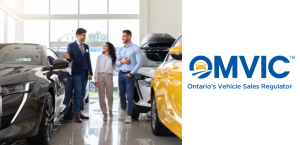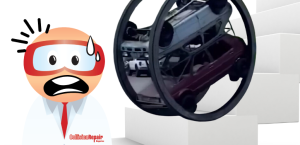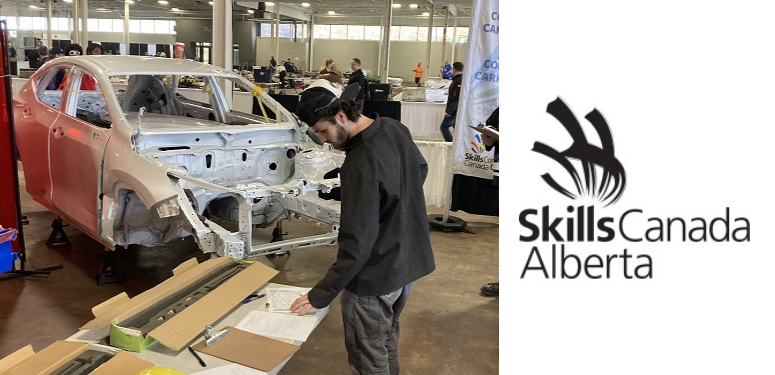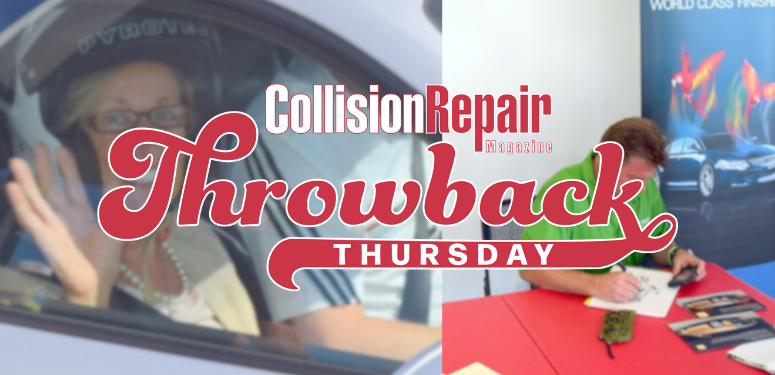By Jeff Sanford
Toronto, Ontario — April 30, 2018 — In this week’s AV Report: Canadian insurers discuss the brave new world, U.S. legislators wrestle over collision data sharing, competition comes to the lidar sector, and much, much more!
A story that appeared in a recent issue of Canadian Underwriter finds that insurers are, “developing a framework for insuring automated vehicles that is designed for handling auto claims quickly, regardless of whether tort liability arises from human error or a manufacturing defect in the automated vehicle.” David McGown, senior vice president of strategic initiatives at Insurance Bureau of Canada (IBC), was speaking during the trade association’s annual general meeting. He is quoted as saying, “We all know the automated vehicle revolution is coming with major ramifications for auto insurance. In the new paradigm, product failure rather than human error will become the key factor for liability coverage. And we must prepare for a messy transition during a time when fully automated vehicles will share the road with less automated ones.” McGown went on to say that IBC initiated the framework in 2017. According to the Canadian Underwriter story, “If a car is fully automated, for example, a car manufacturer may be at fault for a crash because the car itself was defective in some way.” That is, the way auto insurance is going to change in the new world of AVs. A source was quoted as saying, “Product liability claims are more complex and take longer to settle than typical vehicle collision liability claims. Do you want a person who is injured in a collision caused by an automated vehicle to go through a protracted period of uncertainty during the claims process?” To solve this issue, insurers are looking for ways to quickly resolve, “automated vehicle tort cases involving questions of mixed liability.” The framework insurers will use is modelled on a U.K. law called the Automated and Electric Vehicles Bill. According to the story, “One key feature of the U.K. legislation is that injured victims are compensated first by the insurer for the automated vehicle, and then the insurer can try to recover any liability payments from the manufacturer, the technology provider, or whichever party caused the collision. However, the framework developed by Canadian insurers differs from the U.K. model in three key aspects. One is a data-sharing agreement with insurers, vehicle owners and manufacturers.” According to the source, “Right after the accident, insurers would be able to access the information to be able to interpret what caused the collision.” According to the story the two other differences include: A threshold upon which the insurer would recover from the manufacturer, so that the insurer would not be caught negotiating responsibility in every single claim, and a binding arbitration process to settle any disputes between insurers and vehicle manufacturers.”
In the United States there is a bit of a wrestling match taking place concerning the sharing of data from AVs among insurers, OEMs and owners in the case of collisions. In the wake of the first AV collision in Florida, “The Florida Highway Patrol was a party to this investigation, as well as Tesla, and they did not have the ability to play out the data from this car without the involvement of Tesla,” according to Deborah Bruce, an investigator with the National Transportation Safety Board. The investigator was quoted in a recent feature in Car & Driver magazine. The NTSB is worried that OEMs like Tesla are being too stingy with accident data that is often saved in a proprietary format. “So you play that out across the country, and you realize what we would know about crashes in the future will be less than we knew about them in the past, unless there is some standard,” the NTSB investigator was quoted as saying. Considering the amount of data that AVs generate through sensors, accident reconstructions should be much easier to produce and far more accurate. The NTSB developed some recommendations concerning data in the wake of the Florida investigation. The organization encouraged the development of standards, “needed to understand a vehicle’s control status and the frequency and duration of control actions taken either by man or machine.” The organization also urged the National Highway Safety Administration (NHTSA) to, “set benchmarks for new vehicles equipped with automated-driving systems and to ensure data captured is available, at a minimum, to NTSB crash investigators and federal regulators. It recommended that NHTSA define a standard format for reporting incidents, crashes, and vehicle miles operated when automated systems are enabled.” However, the story goes on to say that, “Other branches of the federal government appear content to leave that question unanswered. Seven months after the NTSB made its recommendations, neither the Department of Transportation nor NHTSA, an agency within the DOT’s organizational umbrellas, has acted on them. Meanwhile, pending legislation, Senate Bill 1885, may make it more difficult for data captured by automated vehicles to be deciphered by crash investigators. A section of the bill prohibits any federal department or federal agency from promulgating regulations regarding data ownership or access.” Safety-minded experts suggest the car industry should follow the lead of the airline industry, “which long ago established a series of similar networks that share anonymized data. These networks – including the Aviation Safety Reporting System, which collects voluntary reports from pilots, air-traffic controllers, and others – helps authorities identify safety hazards. Experts believe they have played a role in the long-term improvement of the entire industry’s safety record, a rise that has resonated with fliers. One day, a similar setup might do the same for automated vehicles.” A source is quoted as saying that for regulators and OEMs, “There’s an opportunity for them to come together and say all their data can’t be proprietary.” The story goes on to say that, “Almost all new cars contain event data recorders, commonly known as EDRs, which are akin to the black boxes in aircrafts. In 2015, Congress enacted a law that affirmed that data from EDRs is owned by car owners and that it may not be accessed except under their express authorization.”
In a separate story longtime consumer advocate and well-know political activist Ralph Nader commented to CNN about the state of regulations around AVs. In the 1970s Nader went after auto companies for their bad safety records. Today he says, in relation to AVs, that he had “never seen a more brazen attempt to escape the rule of safety law” in all his years. “With their unproven, secretive technology that’s fully hackable, the autonomous vehicle industry wants to close the door on federal safety protection and close the door to the courtroom,” Nader was quoted as saying. According to the CNN report, “Uber and Lyft already have forced arbitration clauses in their terms of service contracts with passengers.”
For anyone in Toronto this weekend, the Ontario Centres of Excellence (OCE) hosts the Discovery conference at the Metro Toronto Convention Centre, South Building. The show runs April 30 to May 1. The conference floor will be packed with 500 exhibitors from the Ontario and around the globe. According to the press release, “Featured at the conference this year are some of the latest developments in robotics, including global media sensation Sophia the Humanoid Robot, an aerospace zone, the legendary Canadarm from the Space Shuttle, developments in the world of connected and autonomous vehicles and advanced mobility, captivating cutting-edge technology in the WOW Zone, as well as the latest in healthtech, cleantech, wearable technology, artificial intelligence (AI) and augmented/virtual reality (AR/VR).” Reza Moridi, Minister of Research, Innovation and Science, was quoted as saying, “Over the course of two days we will see how homegrown innovations in areas such as robotics, artificial intelligence and aerospace will help shape our future and build a better more prosperous province.”
A company named Velodyne, has dominated the market for self-driving car lidar, which is the light-emitting radar that allows AVs to see the environment around them. But the competition is starting to show up. “Last week, lidar startup Luminar announced that it was beginning volume production of its own lidar units. The company expects to produce 5,000 units per quarter by the end of 2018,” according to one story. Another competitor is an Israeli startup called Innoviz, which is also getting ready to manufacture its InnovizPro lidar in significant volume. According to the company’s website: “The company’s automotive-grade lidar offering a comprehensive mass-market solution, InnovizOne, will be available in 2019. Headquartered in Israel, the company was founded in January 2016 by former members of the elite technological unit of the Israeli Defense Forces with renowned expertise in the fields of electro-optics, computer vision, MEMS design and signal processing. Innoviz is backed by strategic partners and top-tier investors including Aptiv (Delphi Automotive), Magna International, Samsung Catalyst, SoftBank Ventures Korea, AP60 Capital Partners, Glory Ventures, Naver and others.” Apparently the up-coming product will be a solid-state lidar sensor that doesn’t spin. So far lidar units have been cased in large so-called rooftop cases that look like an upside down “chicken bucket.” The Innoviz unit will be much more discreet and will be housed in the body of the vehicle, quelling the worries of those worried about the aesthetic look of AVs. A recent deal between auto parts maker Magna, BMW and Innoviz.





































